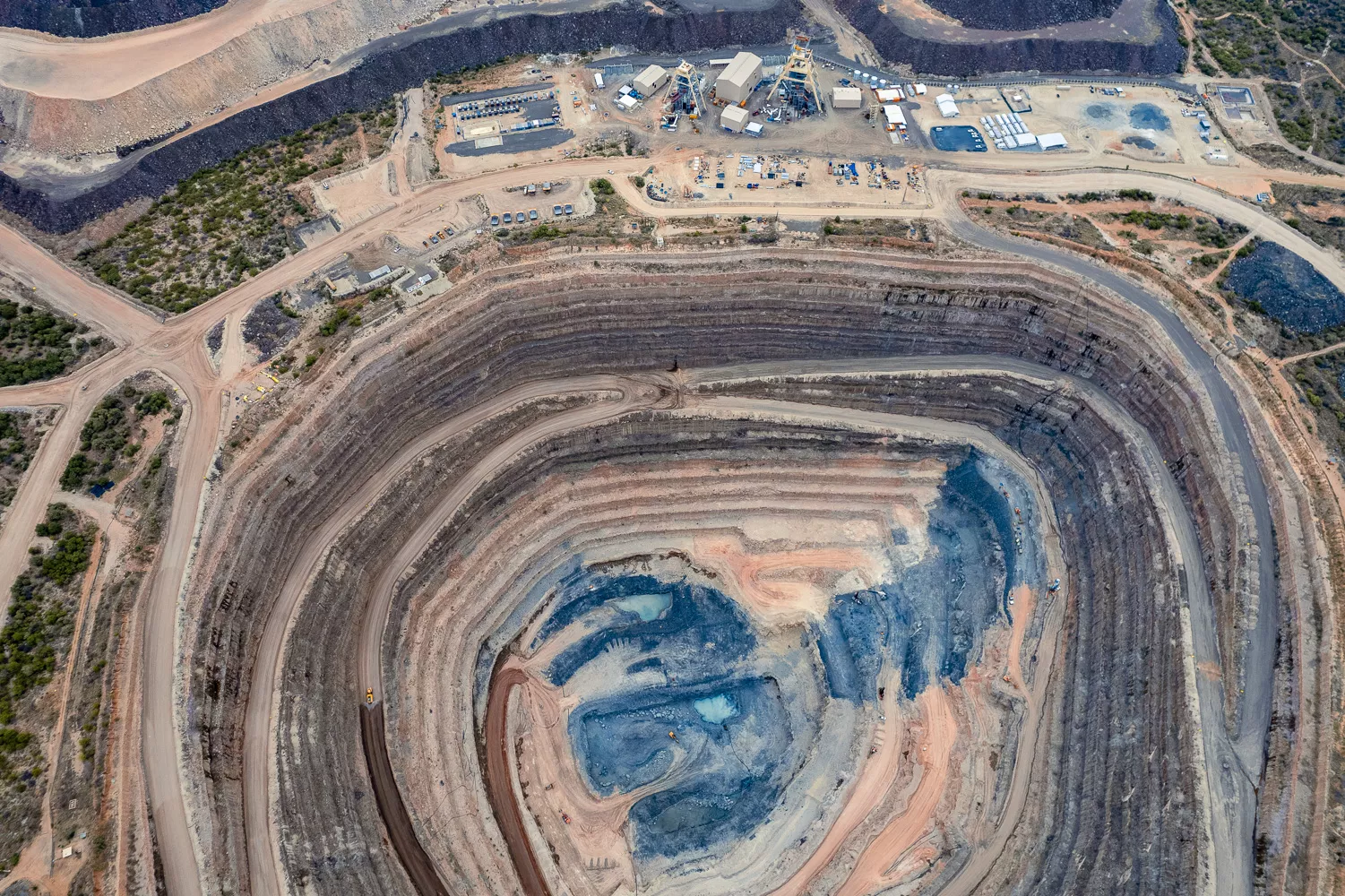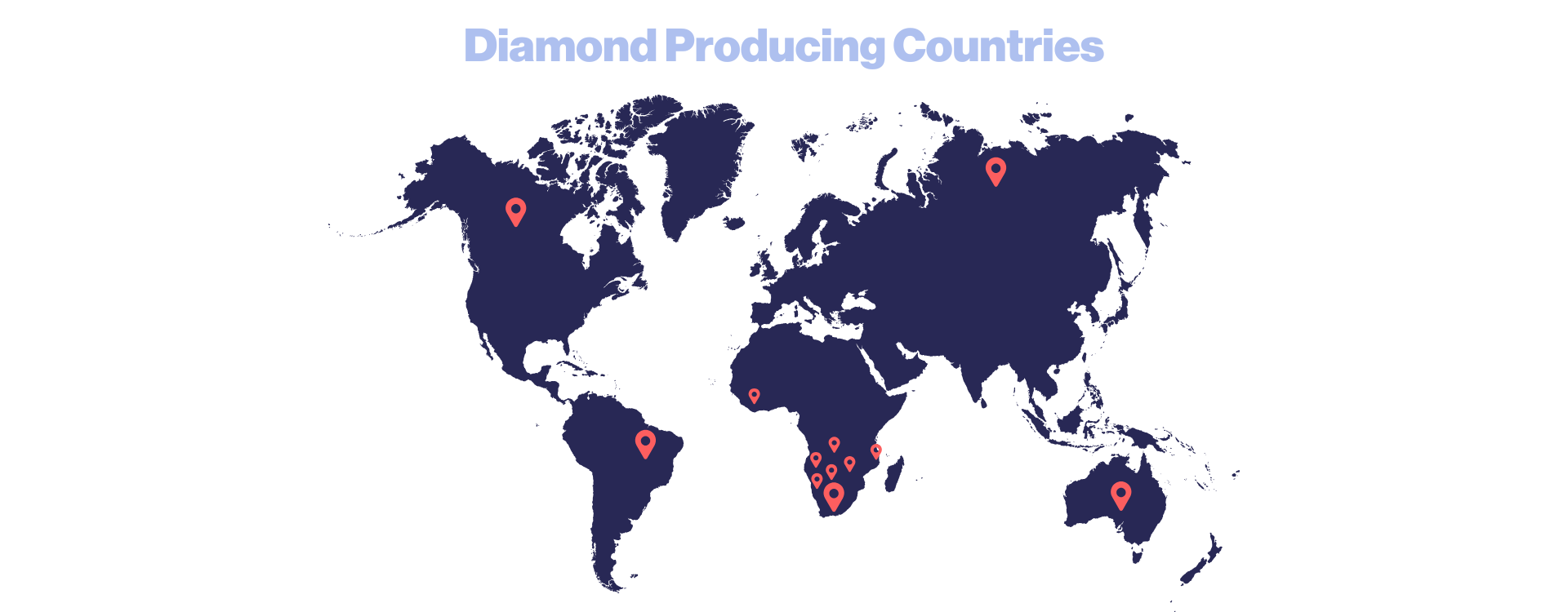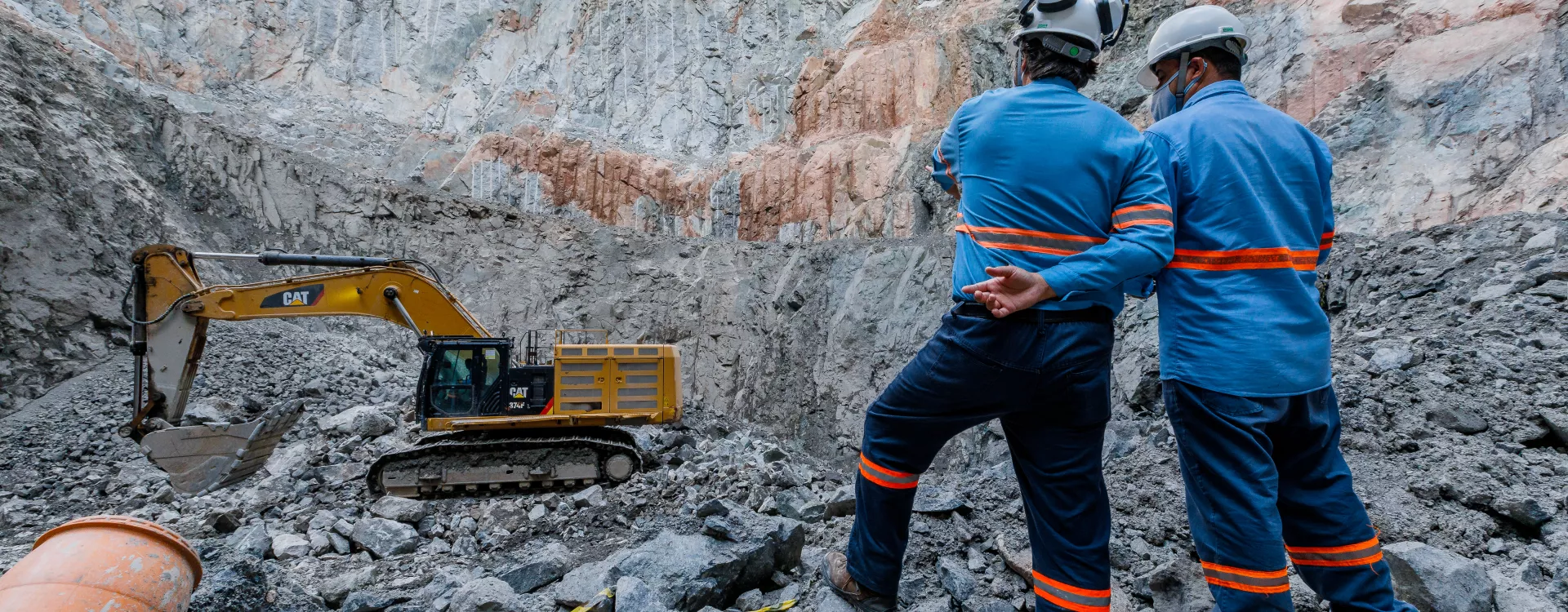Diamond Mining
Diamonds are extraordinary treasures, formed deep within the Earth over billions of years and brought to the surface through volcanic forces. These rare gems are mined in just a handful of countries, such as Botswana, Canada, and Russia, where renowned companies operate vast mining operations to extract them from the earth.
In this section, we answer the questions of where diamonds are mined, who the most important industrial players are, and what types of diamond mining exist.



Where are Diamonds Mined?
Diamonds are mined in several countries across the world, with most production concentrated in a handful of nations. The top-producing countries, generating the highest volumes of diamonds are Botswana, Russia and Canada. Other countries where diamonds are mined, are:
- Australia, known for its Argyle mine, which produced rare pink diamonds before closing in 2020.
- South Africa, the birthplace of modern diamond mining and still a significant producer.
- Angola, a major contributor, with both large-scale and artisanal mining operations.
- Lesotho, known for producing some of the world’s largest gem-quality diamonds.
- Namibia, unique for its offshore diamond mining along the coast.
- Democratic Republic of Congo, produces mainly industrial-grade diamonds.
- Zimbabwe, A growing player in diamond production
Other countries with smaller-scale production include Sierra Leone, Ghana, Tanzania, and Brazil.

How are Diamonds Mined?
Diamonds, formed deep within the Earth over billions of years, are brought to the surface through natural geological processes. Extracting these rare gems involves several mining methods, each tailored to specific conditions.
Open-Pit Mining
Open-pit mining is one of the most common methods for extracting diamonds from kimberlite pipes, the volcanic formations that transport diamonds to the Earth’s surface. This process involves removing layers of soil and rock to access the diamond-rich ore below. Massive machinery and precise engineering are used to excavate these vast pits, which can extend hundreds of meters deep.
Alluvial Mining
Alluvial mining focuses on recovering diamonds that have been carried away from their original source by rivers and streams over millions of years. Miners sift through gravel and sediment deposited in riverbeds, floodplains, or coastal areas to find diamonds. This method often requires less heavy machinery and is used in regions where diamonds are naturally dispersed over large areas.
Marine Mining
Marine mining involves recovering diamonds from the seabed, often several hundred meters below the ocean’s surface. Large ships equipped with advanced technology and powerful suction equipment dredge sediment from the ocean floor. The sediment is then processed to extract diamonds. This method is particularly prominent off the coasts of Namibia and South Africa, where rich deposits of marine diamonds are found.
Small-Scale Mining
Small-scale mining, often carried out by individual miners or small groups, is a more localized method of diamond extraction. This approach is common in developing regions and relies on manual labor and simple tools to search for diamonds in riverbeds, shallow deposits, or alluvial areas. While it provides livelihoods for many communities, small-scale mining can pose challenges related to safety, sustainability, and ethical sourcing.


Who are the Biggest Mining Players?
Several major companies dominate the diamond mining industry, with operations spanning multiple countries. These companies are critical players in the global supply chain, contributing significantly to diamond production.
- De Beers, with mining locations in Botswana, Namibia, South Africa, and Canada, operates through joint ventures, such as Debswana in Botswana and Namdeb in Namibia, and accounts for a significant share of global diamond production.
- ALROSA, with operations in Russia, is the largest diamond mining company by volume, producing about 25% of the world's diamonds (2023 Kimberley Proces figures). Its operations are concentrated particularly in the Yakutia and Arkhangelsk regions.
- Rio Tinto, owns and operates diamond mines such as the Argyle Mine in Australia (now closed) and the Diavik Diamond Mine in Canada. The company is a significant player in the high-value diamond market.
- Petra Diamonds, specializes in operating historic diamond mines, including South Africa’s Cullinan Mine, known for producing some of the world's largest and most famous diamonds.
- Lucara Diamond Corp., is a Canadian mining company and is renowned for its Karowe Mine in Botswana, which has yielded some of the largest diamonds ever discovered, including the 1,758-carat Sewelô (2015), the 1,109-carat Lesedi La Rona (2019) and the 2,488-carat "Motswedi" (2024).
- Burgundy Diamond Mines is focused on the mining, production, cutting, polishing, grading and sale of diamonds. Founded in Perth, Western Australia, Burgundy operates the Ekati Diamond Mine asset in Canada’s Northwest Territories.
- Gem Diamonds operates the Letšeng Mine in Lesotho, known for producing exceptionally large, high-quality diamonds.
- Anglo American owns an 85% stake in De Beers and is thus a major player in the (diamond) mining industry, benefiting from De Beers’ extensive global operations.
Smaller companies, such as Mountain Province Diamonds in Canada and Firestone Diamonds in Lesotho, also contribute to the industry, focusing on specific regions or niches within the diamond market.
